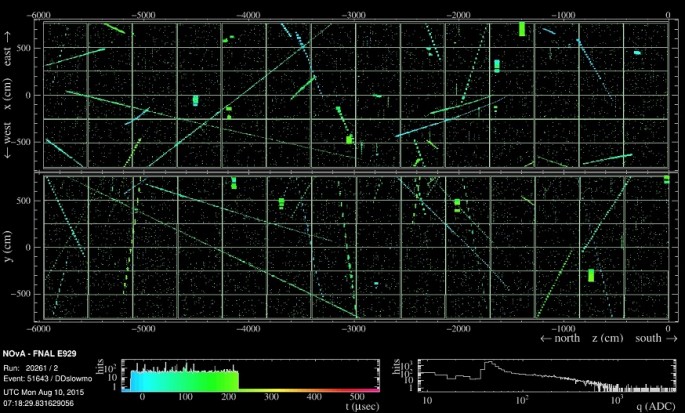Mysterious, elusive particles known as neutrinos were detected by the NOvA neutrino experiment, yielding oscillations of subatomic particles that spans 500 miles from their point of origin.
Neutrinos are similar to cosmic rays generated through deep space where scientists have scanned through millions of cosmic ray detections in order to pinpoint the location of the echoes of these extremely rare neutrino particles.
The main focus of the NuMI Off-Axis Electron Neutrino Appearance is to obtain a better understanding of these particles that physicists have been searching for in the last 80 years. The detector used in this experiment is a massive piece of machinery that measures 50 feet high, 50 feet wide and 200 feet in length.
This new study will hopefully help physicists in the quest of gaining more knowledge about the behavior of the ghostly particles since only little is known about these uncharged particles, making them a challenge to detect since they rarely interact with other particles.
According to Peter Shanahan of the Fermi National Accelerator Laboratory in Illinois, many are anticipating to see the first neutrino oscillations observations and this experiment is dedicated to all the scientists and everyone who worked together for 10 years to design, develop and commission to operate this experiment which is truly gratifying.
The neutrinos exist in three different states called flavors that include the electron, tau and muon. When these neutrinos travel, they oscillate among these three various states.
During this experiment, trillions of neutrinos were generated per second in Fermilab where researchers recorded its source. The particles traveled 500 miles underground from the source toward the detector where they changed flavors across.
According to associate professor of physics Patricia Vahle of the College of William & Mary, Virginia, this beam was produced with muon type neutrinos at Fermilab where the team is searching for muon type neutrinos that will transform into electron type neutrinos. Basically, they are looking for muon type neutrinos to disappear or change into any kind of neutrino.
Neutrinos were first detected by physicist Wolfgang Pauli in 1930 in order to explain beta decay as neutrons decay into protons and electrons. However, they are not affected by electromagnetism that binds protons and neutrons together in the nucleus of atoms. Gravity is weak on subatomic particles and this force produces beta radiation, only affecting extremely small particle scales making them hard to detect and measure.
This experiment provided an extremely rare event when a neutrino alters an atom inside the detector and produces a distinct light and certain particles that provide clues for scientists to detect neutrino flavors.



























